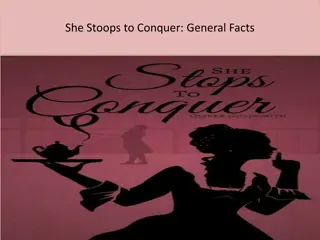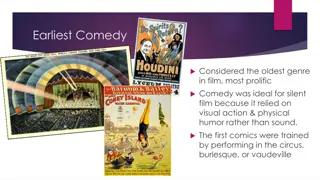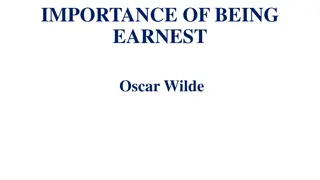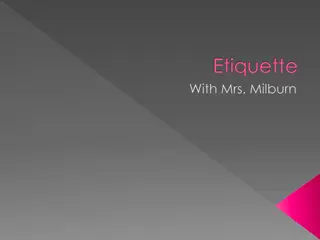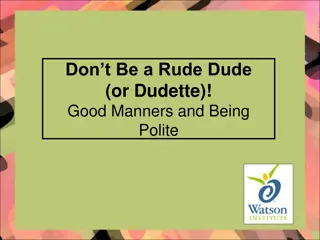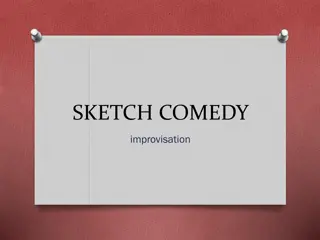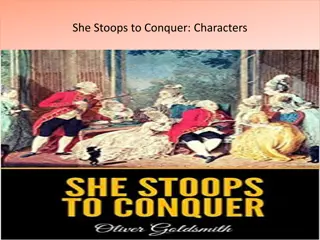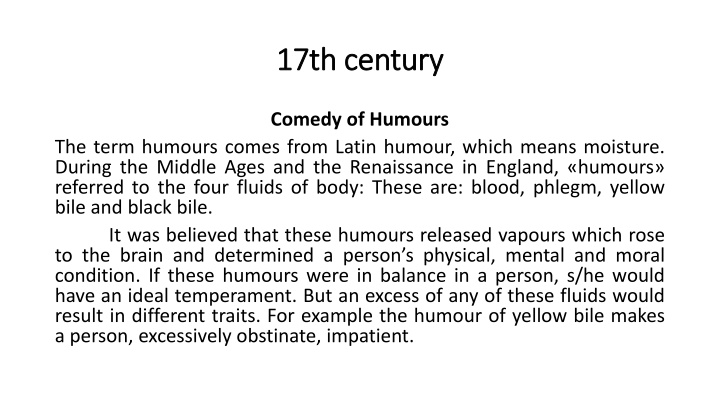
Evolution of Comedy in the 17th Century
Explore the transition of comedic styles in the 17th century, from the ancient theory of humours influencing character traits to the rise of Restoration Comedy of Manners critiquing upper-class behavior in London. Learn about notable playwrights and their works in this pivotal period of English theatre history.
Uploaded on | 1 Views
Download Presentation

Please find below an Image/Link to download the presentation.
The content on the website is provided AS IS for your information and personal use only. It may not be sold, licensed, or shared on other websites without obtaining consent from the author. If you encounter any issues during the download, it is possible that the publisher has removed the file from their server.
You are allowed to download the files provided on this website for personal or commercial use, subject to the condition that they are used lawfully. All files are the property of their respective owners.
The content on the website is provided AS IS for your information and personal use only. It may not be sold, licensed, or shared on other websites without obtaining consent from the author.
E N D
Presentation Transcript
17th 17th century century Comedy of Humours The term humours comes from Latin humour, which means moisture. During the Middle Ages and the Renaissance in England, humours referred to the four fluids of body: These are: blood, phlegm, yellow bile and black bile. It was believed that these humours released vapours which rose to the brain and determined a person s physical, mental and moral condition. If these humours were in balance in a person, s/he would have an ideal temperament. But an excess of any of these fluids would result in different traits. For example the humour of yellow bile makes a person, excessively obstinate, impatient.
By the beginning of the seventeenth century, the term humour meant mood or peculiarity. In drama, the writers designed types based on the theory of the imbalance of bodily fluids. Ben Jonson s Everyman in His Humour is the typical example of Comedy of Humours.
17th century The theatres were closed in 1642 by the puritan regime. After the protectorate, when the theatres reopened, the playwrights mostly wrote comedy of manners.
Restoration Comedy of Manners In these plays, the writers realistically portray the life style of upper classes (the fashions of the time, its manners, its speech). These plays mildly criticize the superficial and libertine conduct of the upper classes. They are always set in London. The action takes place in the drawing rooms, the coffee houses, the streets and gardens of London. The country and country values are despised. They are cynical about marriage. Most of the plays deal with the interest in the opposite sex, money, distrust in love and marriage. There are some stereotypes such as libertines or gay couple who reject to be ruled by the conventions of society. They praise pleasure, liberty, egoism.
The sensible couple; the discarded mistress of the libertine desiring for revenge because of being discarded; the fob, the artificial man of mode; gossiping ladies. The significant playwrights William Wycherley: The Country Wife Sir George Etherege: The Man of Mode William Congreve: The Way of the World


